Description and advantages of the "Khlebosolny" tomato variety
Tomato Hlebosolny will appeal to all gardeners. The fruits are huge, tasty, sweet, and meet the requirements of most lovers of this vegetable in the best possible way.
Content:
- Tomato Bread Salted: description
- Growing tomato seedlings Khlebosolny
- Transplanting seedlings into the ground
- Caring for a tomato Khlebosolny
- Diseases of tomato Khlebosolny
Tomato Bread Salted: description
The Hlebosolny tomato variety was created by the employees of the Siberian Garden company. Tomato bush of medium height, determinate, with limited growth. Grows up to 1 m. Sprawling, large-fruited. 4-5 fruits grow on one hand. The average size of tomatoes is 400 g.
Some specimens grow up to 800 g. The color of tomatoes is bright red. Fruits are slightly ribbed, flat-rounded. The pulp is fleshy, tender, juicy, sweet, tasty. The skin is firm. It prevents the tomatoes from cracking. Therefore, they can be stored for a long time, they can be transported over long distances.
A variety of medium ripening.
The main advantages of the variety:
- Resistant to temperature extremes.
- Unpretentious to lighting.
- The ovaries are formed in all weather conditions.
- Stable fruiting.
- High productivity.
- Great taste.
- High commercial quality.
- The growing season from germination to harvest is 115 to 120 days.
It can be grown both outdoors and in various types of greenhouses. Use fresh, prepare tomato juice, baby food. Preserving whole is difficult because they don't fit in a jar. There is a pink salted tomato with the same characteristics and pink fruits.
Growing tomato seedlings Khlebosolny
It is necessary to sow the seeds of the Khlebosolny tomato in early March, if they plan to grow them in a greenhouse, and in the first half of April, when planted in open ground. The soil is loose and fertile. If it is taken from a personal plot, it needs to be disinfected. To do this, fry it in the oven or spill it with a solution of potassium permanganate. Better yet, use for soil disinfection EM-Bokashi (1 glass per bucket of earth). It is better to take the land in the garden from the mole.
Add mature compost or humus with rotted weed seeds, peat, sand, sphagnum moss, fallen needles. Perlite and vermiculite are added. If the soil on the site is acidic, add chalk or dolomite flour.
Commercially available substrates can be coconut substrates.
Seeds are sown dry, soaked or germinated. Soak in a weak solution of potassium permanganate. Lay for swelling for 10 hours, covered with damp gauze or cotton cloth. Germinate for several days, but make sure that there is always access to air, and the seeds do not dry out.
Seedling care:
- Boxes with seedlings cover with foil or glass and set in a warm place. The germination temperature of tomato seeds is 25 ° С. They germinate for about a week.
- After friendly shoots appear, the film is removed, and the boxes are installed in a bright place, lowering the temperature to 16 ° C. Usually this is the sill of the south, east or west window. After a week for a day, it can be increased to 20 ° C, the night one can be left the same.
- You need to water less often, no more than once a week.It is better to do this with a spray bottle. After the appearance of 5 true leaves, you can water it 2 times a week. Excessive moisture can lead to the development of black leg disease.
- After two real leaves appear on the seedlings, their dive in other dishes, if possible in separate cups. With a large number of seedlings, some of it dive into cups, and the other into common boxes. This will allow you to get the first fruits sooner.
You can plant two plants in one cup. When they grow 15 cm, they tie both plants with a string. After they grow together, the thread is removed, the weak stem is pinched. Thus, a plant with two stems is obtained. It will be more productive than single ones.
Can be used for growing seedlings peat tablets... They make it possible to grow seedlings without replanting. Thus, she avoids the stress inevitable when diving and replanting. The tablets are taken of medium size, with a diameter of 3.6 cm.
Transplanting seedlings into the ground
Seedlings are planted in the greenhouse in early May. Tomatoes can be planted in open ground only after the threat of spring return frosts has passed. 10 days before planting, the seedlings begin to harden. They lower the temperature in the room, take it outside for several hours. The last day is left overnight.
By the beginning of planting, the bushes should be well-formed, have a height of up to 30 cm, 6-7 leaves, a couple of flower brushes with unopened flowers.
The soil for planting tomatoes should be loose and fertilized.
The best precursors for tomatoes are legumes, pumpkin seeds, root vegetables (not potatoes), cabbage, onion... You cannot plant them in areas where nightshades grew in the past or in the previous three years. The acidity of the soil is neutral or weak.
The site should be well warmed up and have natural ventilation in the "west-east" direction. Stagnant air can lead to the development of disease. And it is advisable to protect yourself from the north wind. The scheme for planting tomatoes can be different. Usually the distance between the bushes is about 70 cm. As a result, no more than four plants should grow per square meter.
When planting elongated seedlings, you can lay them at an angle of 45 °. This promotes better rooting. In this case, you need to dig a small hole, and the plants in this case do not need to spend energy on holding in an upright position. After the root system starts working on its own, the stem will begin to grow upward. Strong plants are planted perpendicularly. Tie pegs can be installed immediately next to them. In order for the seedlings to tolerate the transplant better, you can cover it with foil, jars or a broken twig with leaves.
Caring for a tomato Khlebosolny
Care Tips:
- Although the tomato is Hlebosolny and determinate (of limited height), it can grow up to 1 m. In addition, it is spreading. Therefore, it must be tied to a support. You can play sonship, but not necessarily. It depends on the weather conditions and the density of the bush.
- It is possible to grow a tomato of the Khlebosolny variety with one or two stems. When the plant reaches 80 cm, pinch the growing point. Periodically break off the lower leaves under the formed brushes.
- Tomato Bread Salted well tolerates drought. But on watering responds well. Usually, abundant watering is done once a week. It is useful to add a teaspoon to the water. ash... Watering, try not to fall on the leaves. After the moisture has been absorbed, the soil around the bush is loosened, not allowing a crust to form. They do this after every rain. Often the soil near the bushes is mulched. This helps to retain moisture without loosening.
- Tomato bushes twice a year spud... It helps to increase the mass root system and, as a result, the nutrition of the bushes.
- After watering, you can apply fertilizer, mineral or organic... The advantage is given to potassium and phosphorus, nitrogen is introduced less. Magnesium and boron are introduced from micronutrients (the latter - during flowering). Plants are sprayed with boric acid solution. A good result is sprinkling the earth around the bush with ash after the formation of the first ovaries.
- You need to tie it to the pegs after the plants take root and begin to release new leaves. The pegs are driven to a depth of 40 cm, placing them at a distance of 10 cm from the stem. You can tie tomatoes to a wire stretched between adjacent rows. Plants from two rows are tied to it. This makes it easier to harvest tomatoes and even leads to an increase in fruit.
- The lower leaves and stepchildren are constantly removed. This allows the bushes to warm up better and prevents air from stagnating. In mid-August, pinch the tops of all shoots, remove the brushes without ovary (flowering). This will allow the set fruit to grow and ripen faster.
Diseases of tomato Khlebosolny
The Khlebosolny tomato is resistant to the main diseases of tomatoes: fusarium, brown or olive spot (cladosporium), tobacco mosaic virus.
If the leaves turn purple, this indicates that the temperature is too low for them. Plants usually develop normally after its increase.
A green heel (a place near the stalk) speaks of sudden changes in temperature. Leave one or more stepsons, often it helps. Fruits crack if the irrigation regime changes abruptly (alternating drought and heavy rainfall). Feeding with phosphorus strengthens the skin of the fruit.
More information can be found in the video:



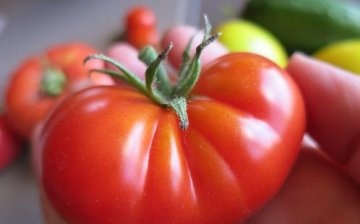

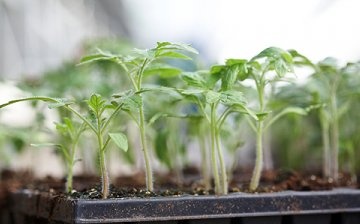


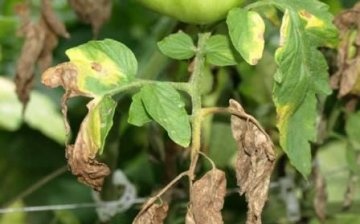






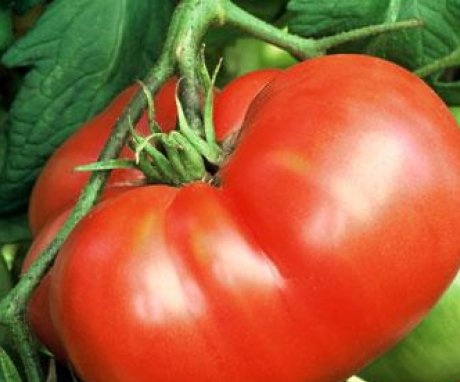
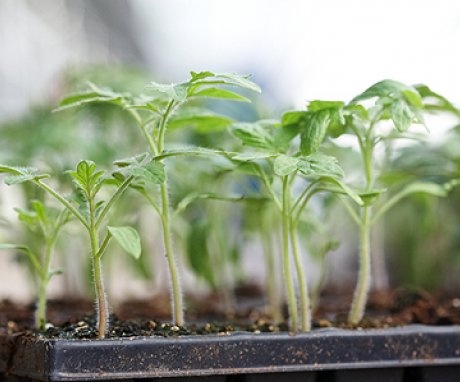
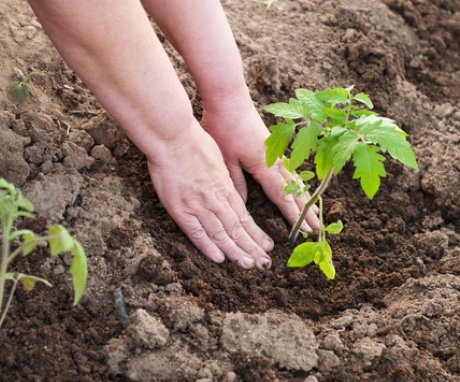
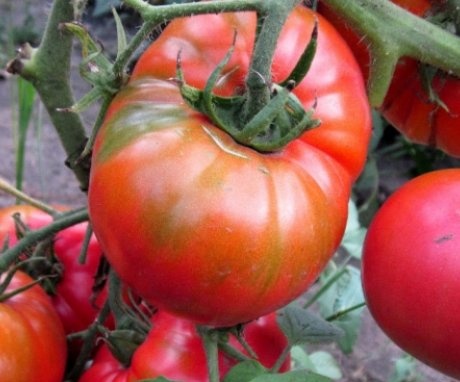
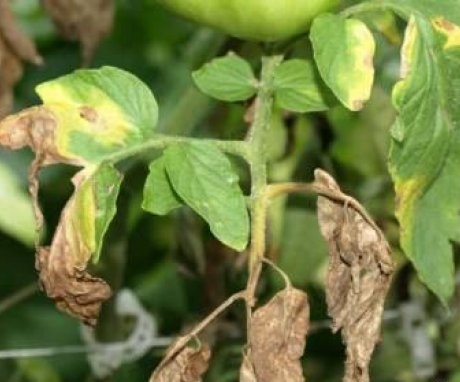
Any variety of tomatoes, preferably pinched, and you need to grow the Khlebosolny variety in two stems. The lower leaves are gradually broken off so that the plants do not have diseases. Bunches with such large fruits must also be tied up, otherwise they can break the branches of the bush.